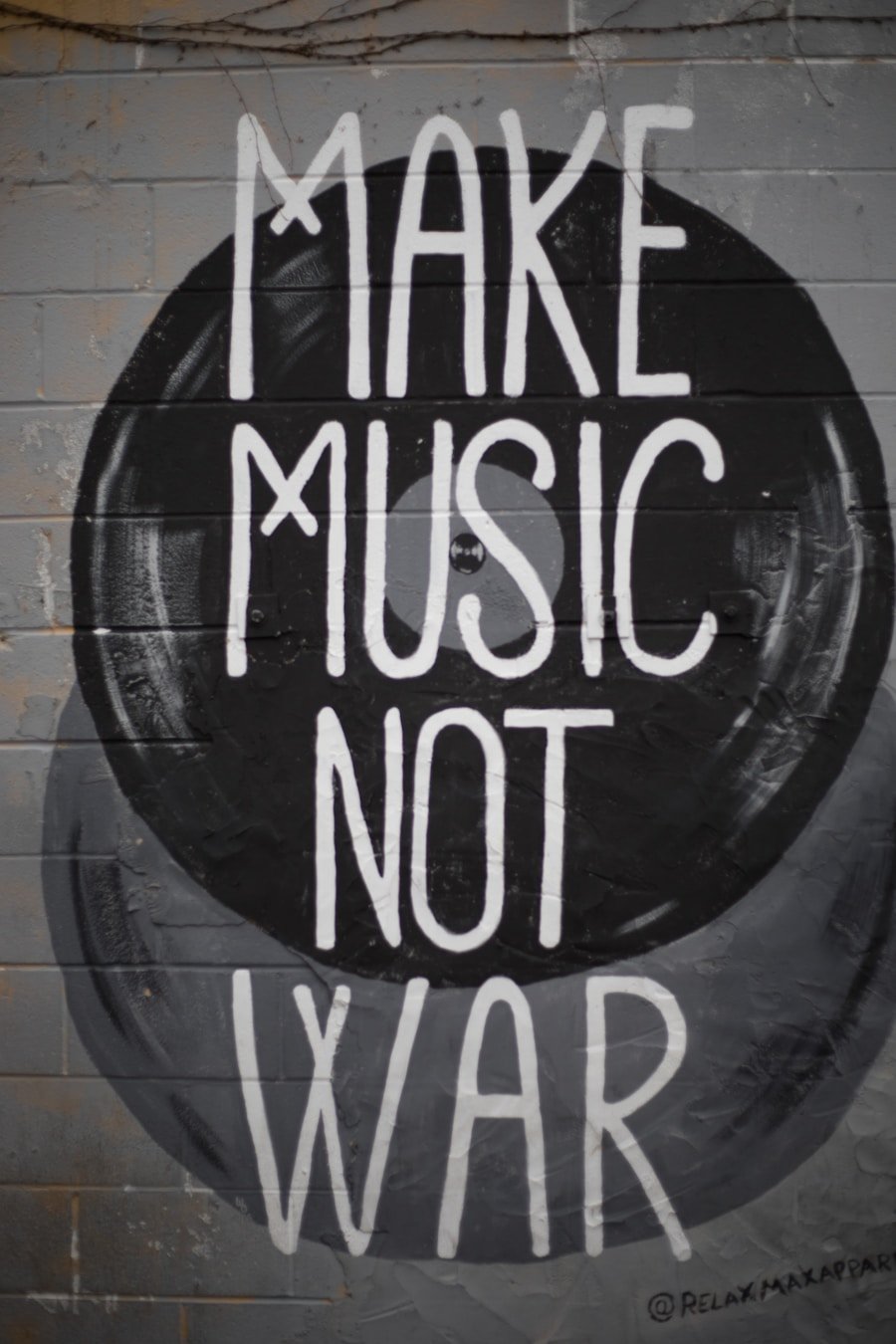The music industry, once a thriving ecosystem of creativity and commerce, is experiencing a significant decline that has left many stakeholders grappling with uncertainty. You may have noticed the changes over the past two decades, as the way we consume music has transformed dramatically. The rise of digital technology has not only altered how music is distributed but has also reshaped the very fabric of the industry itself.
This decline is not merely a passing trend; it reflects deeper issues that affect artists, record labels, and fans alike. As you delve into this topic, it becomes clear that the decline of the music industry is multifaceted. It encompasses a range of factors, from the impact of digitalization to the rise of streaming services and illegal downloads.
Each element plays a crucial role in shaping the current landscape, and understanding these dynamics is essential for anyone interested in the future of music. The challenges faced by artists and record labels today are profound, and they call for innovative solutions to revitalize an industry that has long been a cornerstone of cultural expression.
Key Takeaways
- The music industry has experienced a decline in sales and revenue due to digitalization and the rise of streaming services.
- Digitalization has significantly impacted music consumption, leading to a decline in physical album sales and the rise of singles.
- Streaming services have played a major role in the decline of music sales, as consumers opt for subscription-based access to music rather than purchasing albums.
- Illegal music downloads have also contributed to the decline in revenue for artists and record labels, impacting their ability to generate income from their work.
- The decline in revenue has forced artists and record labels to shift their marketing and promotion strategies in order to adapt to the changing landscape of the music industry.
The Impact of Digitalization on Music Consumption
Digitalization has revolutionized how you access and enjoy music. Gone are the days when you had to purchase physical albums or wait for your favorite songs to play on the radio. With just a few clicks, you can now stream millions of tracks from anywhere in the world.
This convenience has fundamentally changed your relationship with music, making it more accessible than ever before. However, this shift has also led to a decline in traditional music consumption methods, which has had far-reaching consequences for the industry. As you explore this digital landscape, you may notice that the ease of access has led to a culture of instant gratification.
You can create playlists, discover new artists, and share your favorite songs with friends in seconds. While this democratization of music is empowering for listeners, it has also contributed to a devaluation of music as an art form. The sheer volume of available content can make it challenging for individual artists to stand out, leading to a saturation of the market that diminishes the perceived value of their work.
The Role of Streaming Services in the Decline of Music Sales

Streaming services have emerged as the dominant force in music consumption, fundamentally altering how you experience music. Platforms like Spotify, Apple Music, and YouTube have made it possible for you to access vast libraries of songs for a monthly subscription fee or even for free with ads. While this model offers unparalleled convenience, it has also played a significant role in the decline of traditional music sales.
You may find yourself purchasing fewer albums as you rely more on streaming services for your listening needs. The financial implications of this shift are profound. Artists receive only a fraction of a cent per stream, which means that even if their songs are played millions of times, they may not see substantial revenue from those streams.
This model favors established artists who can generate millions of streams while emerging musicians struggle to gain traction. As you consider your own listening habits, it’s essential to recognize how this system impacts the livelihoods of those who create the music you love.
The Decline of Physical Album Sales and the Rise of Singles
| Year | Physical Album Sales (in millions) | Digital Singles Sales (in millions) |
|---|---|---|
| 2010 | 240.8 | 1,172.5 |
| 2011 | 223.5 | 1,336.5 |
| 2012 | 193.4 | 1,336.5 |
| 2013 | 165.4 | 1,260.5 |
| 2014 | 140.8 | 1,234.2 |
The decline of physical album sales is another critical aspect of the music industry’s transformation. You may remember a time when buying a CD or vinyl record was a cherished experience—flipping through album artwork and reading liner notes added depth to your connection with the music. However, as digital formats have taken over, physical sales have plummeted.
This shift has led to a focus on singles rather than full albums, as artists aim to capture your attention with individual tracks rather than cohesive bodies of work. This trend toward singles has significant implications for artists and their creative processes. You might notice that many musicians now prioritize releasing catchy singles over developing full albums, which can lead to a fragmented listening experience.
While this approach may cater to your desire for instant gratification, it can also dilute the artistic expression that comes from crafting an entire album. As you navigate this new landscape, consider how these changes affect not only your listening habits but also the way artists create and share their work.
The Influence of Illegal Music Downloads on the Industry
Illegal music downloads have long posed a challenge for the music industry, contributing to its decline in revenue and undermining artists’ efforts to earn a living from their craft. You may have encountered websites or peer-to-peer sharing platforms that allow you to download music without paying for it. While this practice may seem harmless or even justified in some cases, it has far-reaching consequences for musicians and record labels alike.
When you download music illegally, you’re not just bypassing payment; you’re also sending a message about the value of artistic work. This devaluation can discourage artists from investing time and resources into their projects, knowing that their efforts may not be rewarded financially. As you reflect on your own choices regarding music consumption, consider how supporting legal avenues—such as purchasing albums or subscribing to streaming services—can help sustain the industry and ensure that artists continue to create the music you love.
The Effects of Declining Revenue on Artists and Record Labels

The decline in revenue within the music industry has created a ripple effect that impacts everyone involved—from independent artists to major record labels. As you observe this landscape, it’s evident that many musicians are struggling to make ends meet. With streaming royalties often falling short of providing a sustainable income, artists are forced to seek alternative revenue streams such as merchandise sales, live performances, and crowdfunding campaigns.
Record labels are also feeling the pinch as traditional revenue models crumble. You may notice that some labels are shifting their focus toward signing fewer artists but investing more heavily in their development. This approach aims to create superstars who can generate significant revenue through touring and merchandise sales rather than relying solely on album sales.
However, this strategy can leave many talented musicians without the support they need to thrive in an increasingly competitive environment.
The Shift in Marketing and Promotion Strategies in the Music Industry
As the music industry grapples with its decline, marketing and promotion strategies have evolved significantly to adapt to new realities. You might have noticed that social media platforms play a crucial role in how artists connect with their audiences today. Instead of relying solely on traditional advertising methods or radio play, musicians are leveraging platforms like Instagram, TikTok, and Twitter to build their brands and engage with fans directly.
This shift toward digital marketing allows you to discover new artists in more organic ways—through viral challenges or engaging content rather than polished advertisements. However, it also places immense pressure on artists to maintain an active online presence while creating new music. As you engage with your favorite musicians on social media, consider how this dynamic affects their creative process and overall well-being.
The Future of the Music Industry: Potential Solutions and Innovations
Looking ahead, the future of the music industry remains uncertain but ripe with potential for innovation and revitalization. As you contemplate what lies ahead, consider how emerging technologies could reshape the landscape once again. For instance, advancements in artificial intelligence could lead to new ways for artists to create and distribute their work while enhancing your listening experience through personalized recommendations.
Moreover, there is growing interest in alternative revenue models that prioritize fair compensation for artists. You might encounter initiatives aimed at creating direct-to-fan platforms or blockchain technology that ensures transparency in royalty distribution. These innovations could empower musicians while fostering a more sustainable ecosystem for all stakeholders involved.
In conclusion, while the decline of the music industry presents significant challenges, it also opens doors for creativity and transformation. As you navigate this evolving landscape, remember that your choices as a listener can have a profound impact on the future of music. By supporting artists through legal channels and engaging with their work in meaningful ways, you contribute to a vibrant cultural tapestry that continues to inspire generations to come.
